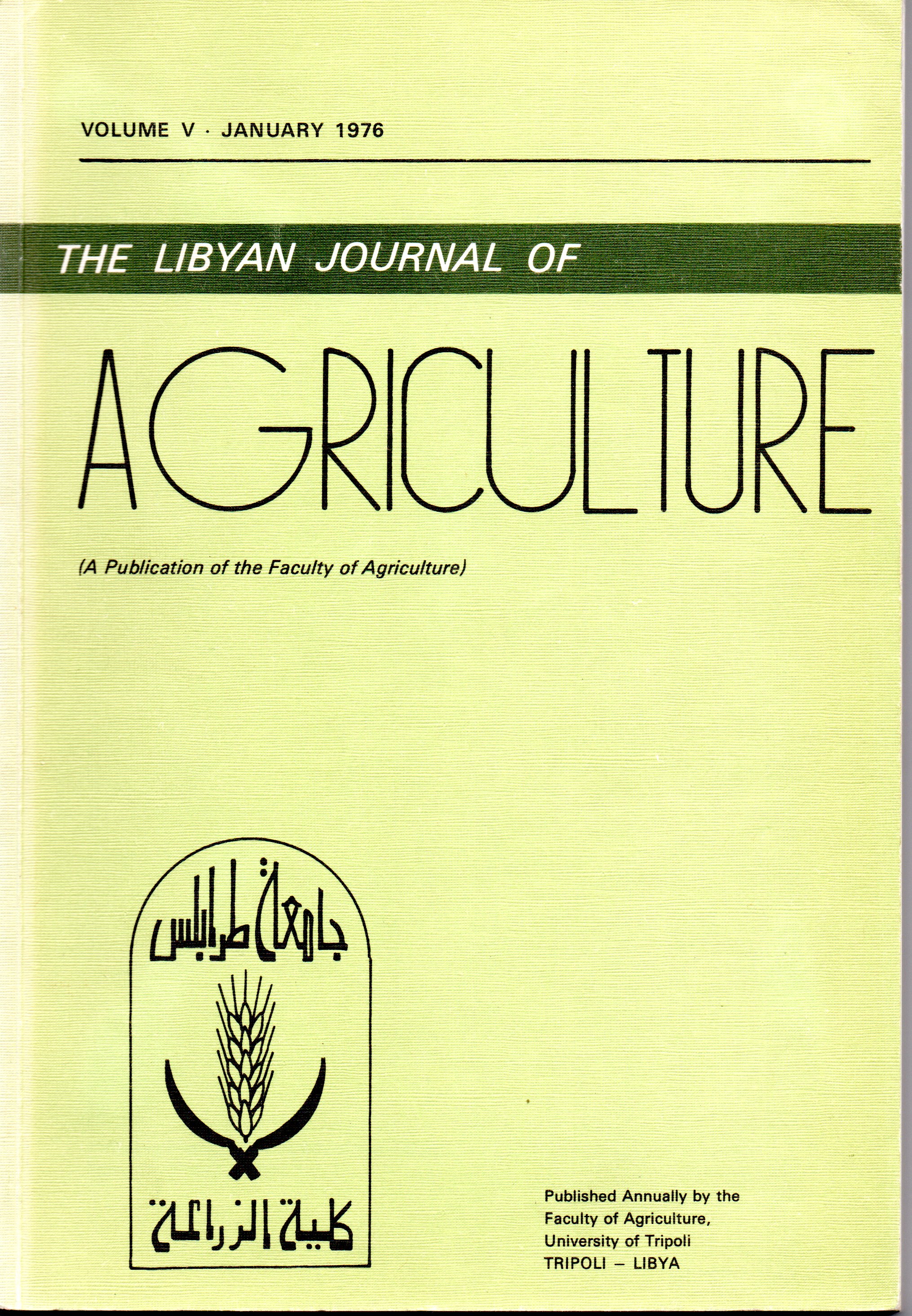Response of a Newly Developed Variety of Dwarf Wheat to Nitrogen Level and Supplementary Irrigation
Main Article Content
Abstract
The effect of nitrogen fertilizer on the vegetative growth, and the interaction of nitrogen level and soil moisture content during the grain filling period on grain yield and various yield components of the dwarf spring wheat variety ‘Sidi Misri 1' were studied in a field experiment containing 4 nitrogen levels and 3 irrigation intensities with 3 replicates.
It appreared that with increasing the supply of nitrogen fertilizer from 0 to 140 kgN/ha, there were almost linear and positive responses in the number of tillers, dry weight and area of leaves per plant, specific leaf weight and total dry weight of the shoot. Significant correlation coefficients of 0.98. 0.99, 0.85, and 0.99 were found between nitrogen levels and these growth attributes, respectively.
Increasing the nitrogen level significantly increased straw production, total grain yield, the number and weight of grains per plant and the number of spikes per plant (or number of productive tillers). On the other hand, no significant responses due to nitrogen treatments were observed with the number of grains per spike and with grain size.
Soil moisture content after anthesis was found not to affect significantly straw yield, total grain yield, number and weight of grains per plant, number of spikes per plant, number of grains per spike and grain size. Only with the number of grains per plant was there a significant interaction between soil moisture and nitrogen level. With higher nitrogen supply, the lowest soil moisture content (60 centibar tension) significantly increased the number of grains per plant.

